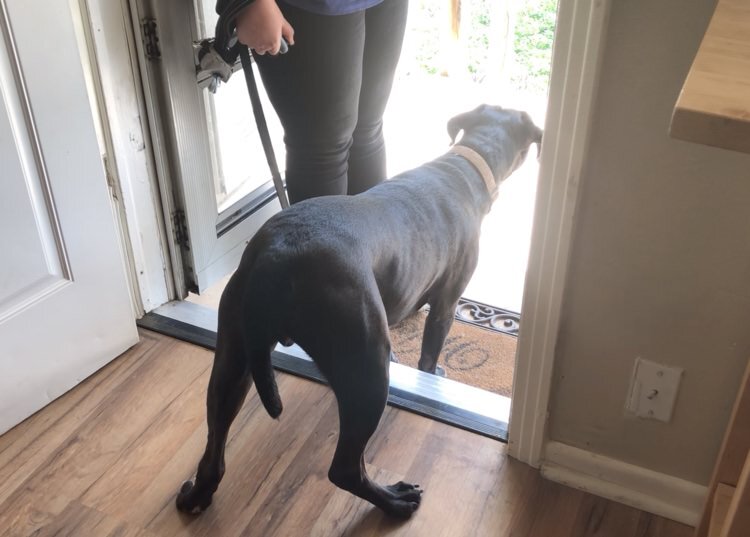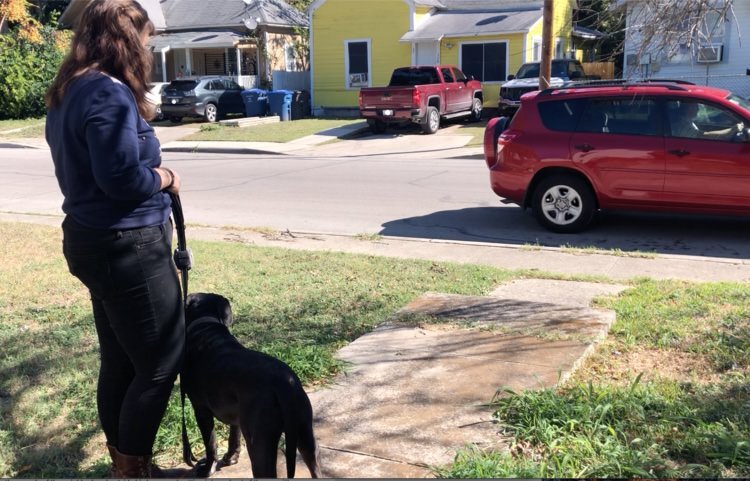Case File: Why is my dog aggressive to visitors?
Meet Colt. He is a black Labrador Retriever and was first discovered wandering the streets of San Antonio by his current owners. Falling quickly in love, they took him in but soon discovered that although he was friendly with them, he exhibited fear and aggression when other people entered the house.
To Colt’s owners’ dismay their continued attempts to calm and reassure him were unsuccessful. He was highly reactive to sounds outside the home-with barking, running back and forth, and tearing down window blinds multiple times when someone or something passed by the house. Most concerning of all, he would bark and charge at anyone who came to visit.
In response to this unwanted behavior Colt’s owners initially reached out to a trainer who used an e-collar. For several months they pursued this approach without success. Eventually, an accidental shock caused Colt great alarm and they discontinued this training. Colt remained very fearful of many everyday things like getting into the car, passing people on sidewalks and loud vehicles outside the house. In fact, Colt’s anxiety appeared only to be getting worse and one day this resulted in a bite to a visitor, causing light bruising. Colt’s owners were now faced with the possibility of either rehoming him or completely confining him to a separate room whenever they had guests, to ensure no repeat of the incident. Unsure of what else they could do, they contacted us for help, stating that their goals were to help Colt’s fears in general, and to make him safer when new people or dogs entered the home.
It is never a surprise when clients come to us after previously training with a shock collar and their dog is still fearful. The difficulty of using punishment effectively and the accidental down side to this method is well documented. Even if the discomfort of the shock collar suppresses a dog’s behavior, the underlying fear is unchanged and sometimes worsened. We never use e-collars or prong collars for training because those tools don’t help change a dog’s fearfulness to comfort.
During our initial consultation, it was clear that Colt was very scared. He barked when we entered the home. His body was low, his ears were back, and he startled at any unexpected sound. As the session progressed, we were slowly able to see more of the Colt that his owners knew and loved. We introduced his owners to fear-free techniques, showing them how to create positive associations to new people, reduce his fear of cars and noises, and dogs passing by the house. His owners learned how to teach Colt using only positive reinforcement so he was never scared or forced during training. We saw his silly and playful side start to emerge. Colt could be Colt.
It was wonderful to see the transformation in Colt from the barking and lunging of the first session, to the quiet, sitting and greeting of the last session as he sat in his front yard completely comfortable with the cars passing by on the road nearby. It was gratifying to hear how Colt’s progress continued between our sessions too; greeting visitors as new friends, comfortable with the sounds of the neighborhood outside his home and getting into and out of the car with ease.
Colt’s behavior became so greatly improved that he was able to go into a busy pet store without becoming reactive. His owners were overjoyed! As with all our training, we first worked with Colt’s fearfulness. We knew he could not learn if he was scared. Once he was less fearful, he learned easily and enthusiastically. This has helped him to be the calmer, happier dog that he is today.



